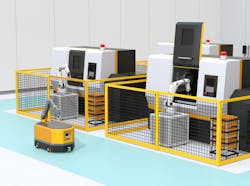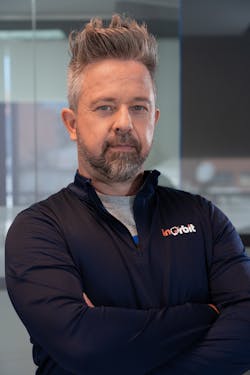Florian Pestoni, CEO of InOrbit, reveals the future of robot orchestration and AMR integration in manufacturing
Florian Pestoni, co-founder and CEO of InOrbit, knows a thing or two about robot orchestration. He's explained how to coordinate multiple robots from different manufacturers in light of considering VDA 5050, MassRobotics interoperability standard or open RMF.
As more work cells integrate robots, the discussion turns toward orchestrating them.
How can AMR technology be integrated into an existing control architecture used in a machine-tending or palletizing or welding or other type of manufacturing work cell?
Autonomous mobile robots (AMRs), on the other hand, provide the flexibility to stitch together the work of individual cells, offering flexibility beyond what a traditional conveyance would provide. AMRs can thus become the glue that makes the flow of material throughout a facility work, while also sharing space with people and manually operated vehicles.
What role does software play in coordinating and integrating these devices?
Florian Pestoni, InOrbit: The lines between traditional operational technology (OT) and information technology (IT) are being blurred. I call it the big collision, because this is not without tension. This is evident in manufacturing environments, which are under pressure to handle smaller batches and a higher mix of increasingly personalized products. OT has traditionally been all about fixed production lines, while IT is data-driven. Modern robots are data machines, both generating massive amounts of data and also being orchestrated through dynamic software.
The companies that hold on to the way things have always been done, resisting the latest technologies like cloud, artificial intelligence (AI) and the Industrial Internet of Things (IIoT), are being left behind by those that embrace the power of software.
About the Author
Mike Bacidore
Editor in Chief
Mike Bacidore is chief editor of Control Design and has been an integral part of the Endeavor Business Media editorial team since 2007. Previously, he was editorial director at Hughes Communications and a portfolio manager of the human resources and labor law areas at Wolters Kluwer. Bacidore holds a BA from the University of Illinois and an MBA from Lake Forest Graduate School of Management. He is an award-winning columnist, earning multiple regional and national awards from the American Society of Business Publication Editors. He may be reached at [email protected]

Leaders relevant to this article:


